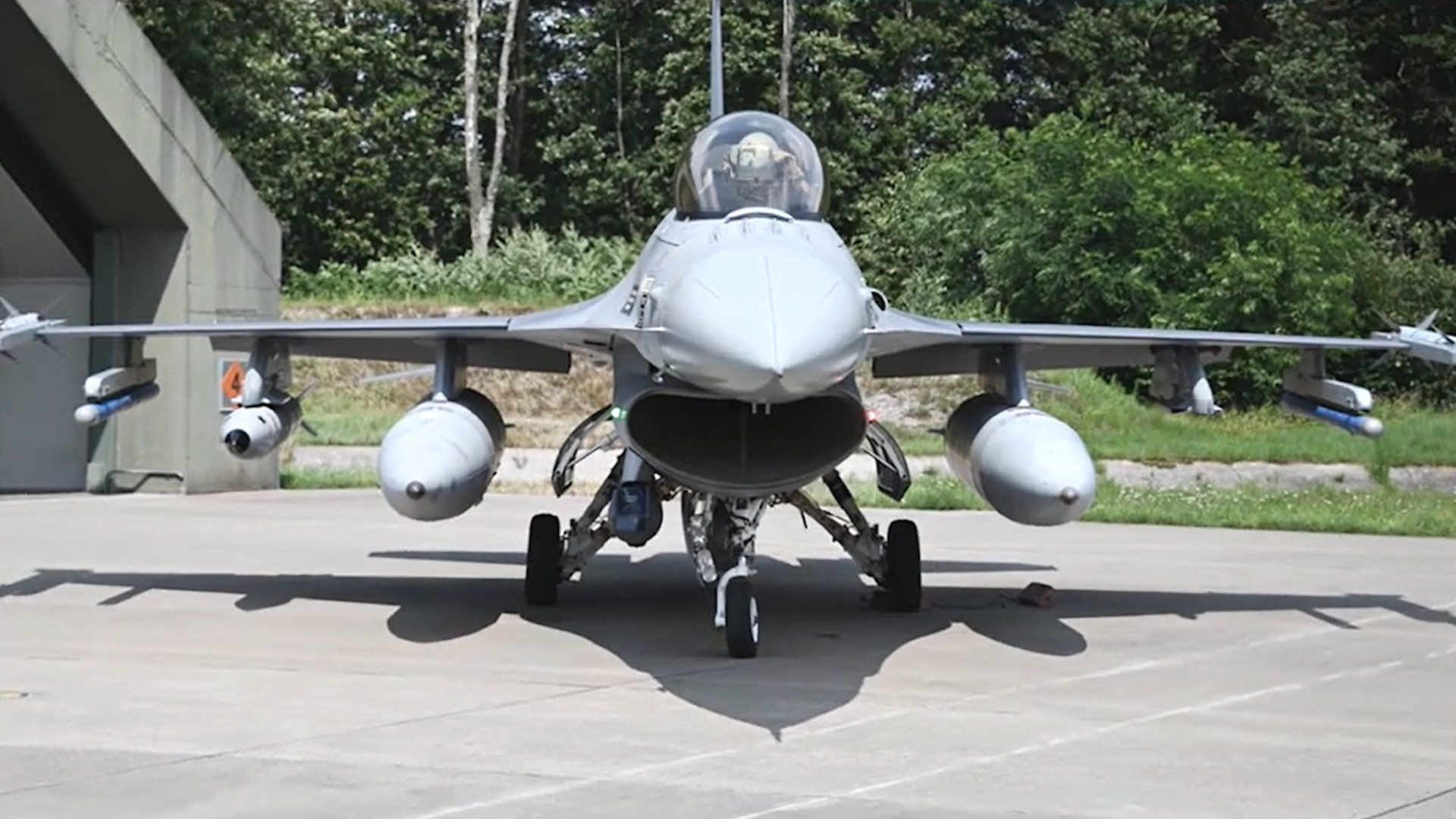A picture has emerged showing an F-16 Viper fighter that appears to be sitting at Volkel Air Base in the Netherlands with an inert training version, or “shape,” of the B61-12 nuclear gravity bomb under its wing. This offers a rare glimpse into the ongoing work to field America’s latest nuclear bomb in Europe as part of NATO’s nuclear sharing agreements.
The image of the F-16 with the B61-12 shape under its wing was included in a video montage that the Department of Energy’s Sandia National Laboratories put out in 2022 highlighting achievements from the previous year. Hans Kristensen, the Director of the Nuclear Information Project at the Federation of American Scientists (FAS) think tank in Washington, D.C., spotted the picture, seen at the top of this story, and shared his thoughts about it in a blog post earlier today.

Kristensen assessed that the image was taken at Volkel based on the distinctive design of the hardened aircraft shelter seen to the left of the F-16 in the image from the Sandia video.
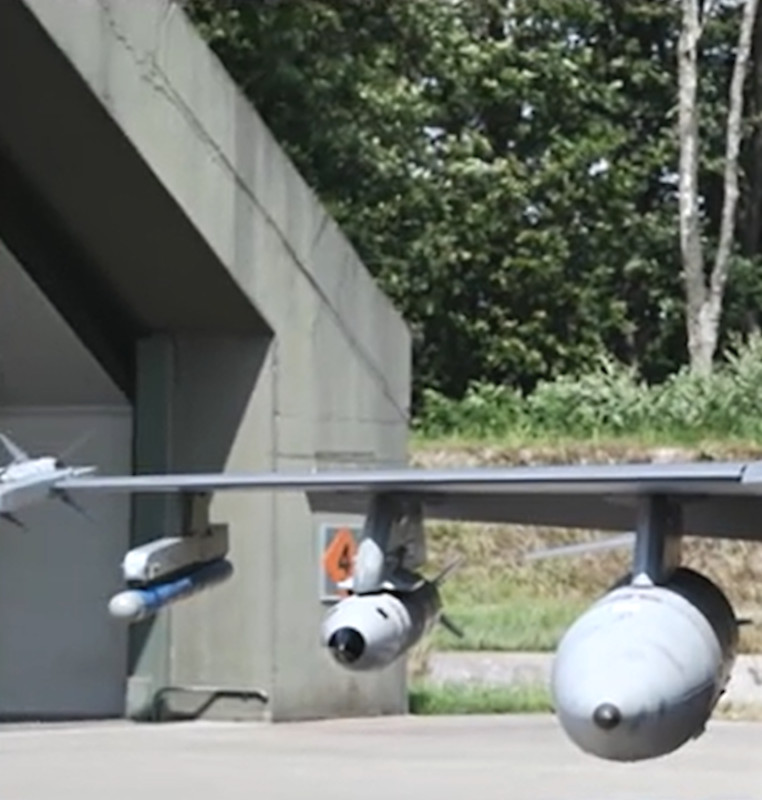
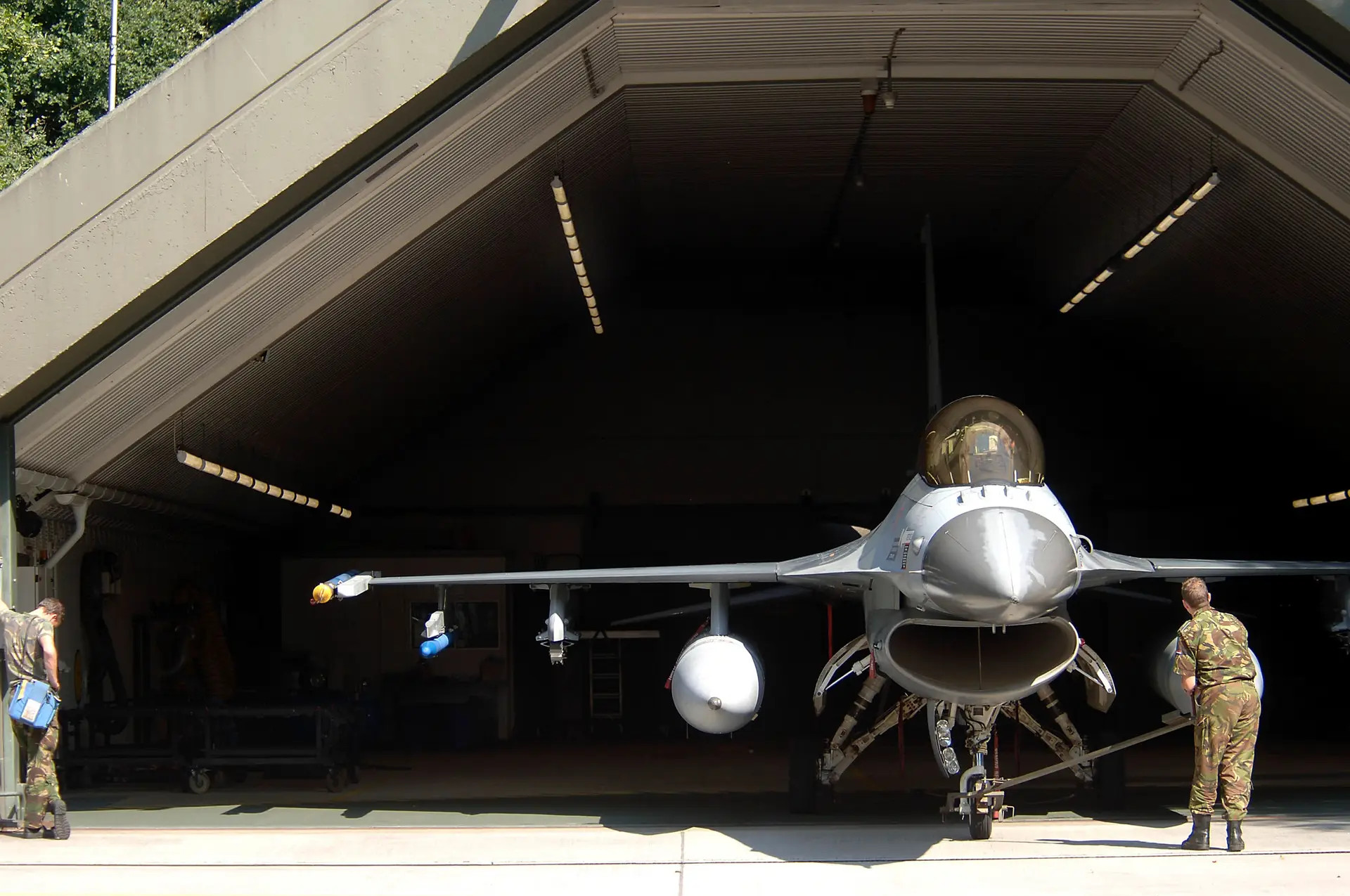
“Eleven of the [32] shelters at the Volkel [air base] are equipped with an underground vault that can hold up to four B61 bombs. But normally they only hold 1-2 bombs each for an estimated 10-15 bombs at the base,” according to FAS.
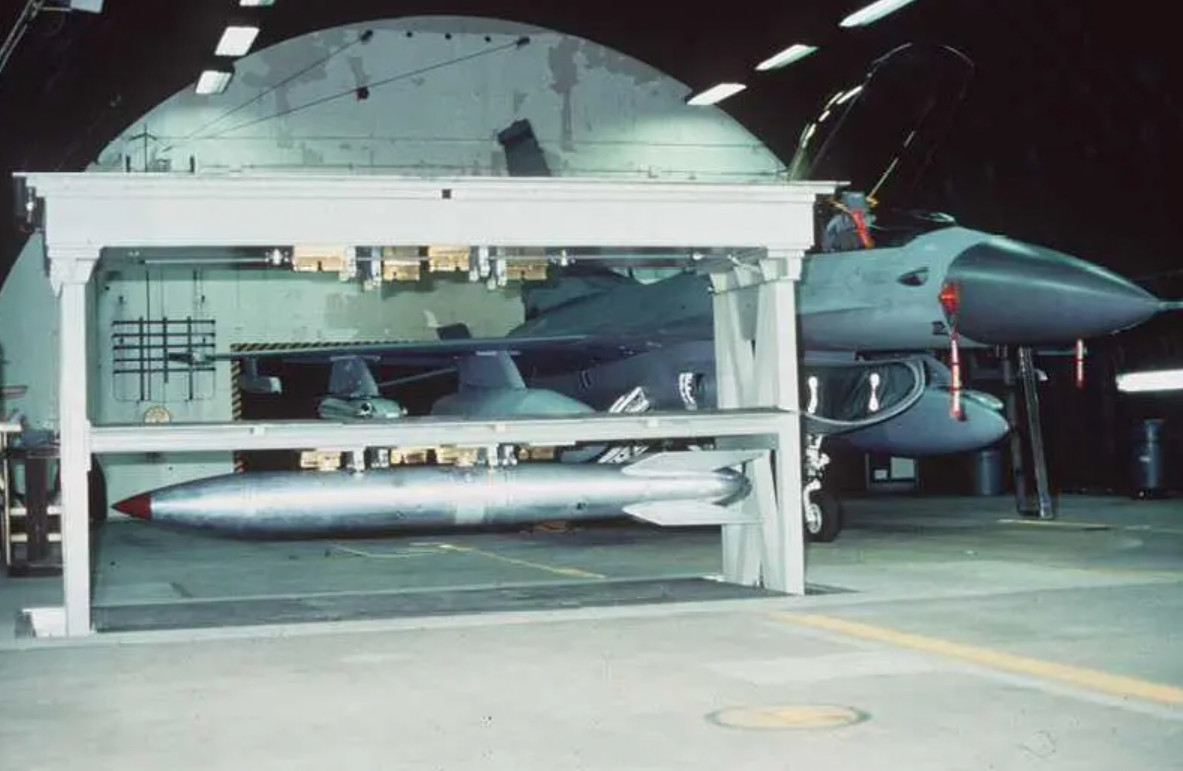
Volkel is one of several bases in Europe where the U.S. military keeps B61s, which could be released to select NATO members for use on their aircraft as part of the alliance’s nuclear weapon sharing agreements.
The B61-12 also has a distinctly different tail section from earlier B61 variants, which is clearly visible in the picture. The B61-12 has a distinct rear end because it is the first version of this nuclear bomb to feature a precision-guided tail kit. The B61-12 is an amalgam of components from a number of earlier B61 types combined with the new tail and other improvements. You can read more about the B61-12, which will replace multiple existing versions, and its predecessors in this past War Zone feature. The Pentagon is also now looking to start development of another B61 variant, the B61-13, as you can read more about here.
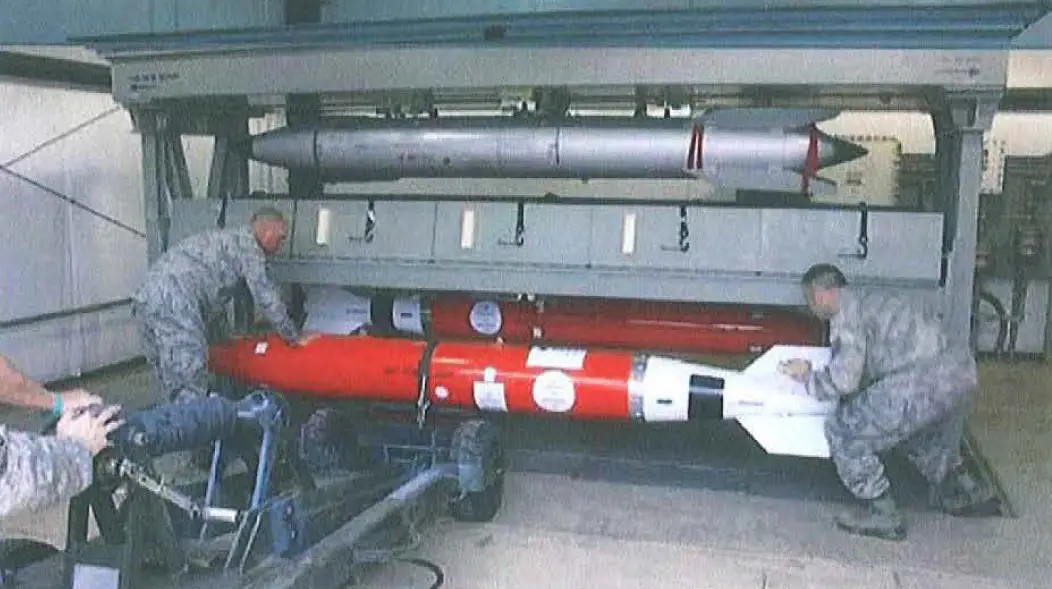
Whether the F-16 in the picture belongs to the Royal Netherlands Air Force (RNLAF) or not is unclear. The RNLAF is now in the process of transitioning to the F-35A Joint Strike Fighter and is expecting to retire the last of its Vipers in the coming year. In November, the head of the Dutch Air Combat Command announced that the country’s F-35A fleet had received an “initial certification for the deterrence mission.”
As FAS’ Kristensen notes in his blog post today, if this image was indeed taken in 2021, this would have been before the first production examples of the B61-12 were delivered and before they formally entered the U.S. stockpile. It is not surprising that preparations to deploy these weapons in Europe have already been going on for years now and other evidence of this has previously emerged. The War Zone previously obtained a U.S. military report via the Freedom of Information Act that was published in April 2019 and included a picture, seen earlier in this story, showing a fit check of B61-12 shapes in a secure vault at an undisclosed location.
Whether any operational B61-12s are in Europe now is unclear. In October 2022, Politico reported that the plan was for the first examples to arrive on the continent this month.
Based on official information released to date, only U.S. Air Force B-2 Spirit stealth bombers are currently approved to employ the B61-12 operationally. Air Force F-15E Strike Eagles and F-35A Joint Strike Fighters, as well as the service’s future B-21 Raider stealth bombers, are also set to become operational delivery platforms for these nuclear bombs.

In addition, B61-12 is expected to be integrated onto select NATO F-16s, as well as U.S. Air Force Vipers. Some Belgian Vipers, in addition to the ones in Dutch service, are currently cleared to employ older B61 variants under NATO’s nuclear sharing arrangements. Some of the Panavia Tornado swing-wing combat jets in service in Germany and Italy are also capable of serving as nuclear weapon delivery platforms.
It is worth noting that U.S. and NATO F-16s, as well as NATO Tornados, will not be able to use the guidance functionality found on the B61-12. This issue may be increasingly moot. All of the current known NATO members that are party to the nuclear sharing agreements have or are in the process of acquiring F-35s to supplant their F-16s and/or Tornadoes.

As already noted, the RNALF is moving toward being able to employ U.S. B61s on its F-35As. Germany’s decision to purchase Joint Strike Fighters was also explicitly driven in large part by requirements related to the nuclear mission.
Overall, NATO members that participate in the alliance’s nuclear weapon sharing arrangements have historically been very guarded about that fact. There has been a noticeable shift in attitude since Russia launched its all-out invasion of Ukraine in February 2022, which has become even more pronounced since the Russian military forward-deployed nuclear weapons in neighboring Belarus earlier this year.
Polish authorities have been particularly open about their interest in at least hosting U.S. nuclear weapons in the future. Poland shares a border with Belarus and Russia’s Kaliningrad enclave, the latter of which at least has facilities to support the deployment of nuclear weapons, if they aren’t actually in place there now.
The picture of the F-16 with the B61-12 shape under its wing, likely taken at Volkel Air Base, only further underscores that NATO very much remains a nuclear alliance and that its members are actively working toward being able to employ new capabilities in this regard.
Contact the author: joe@thedrive.com
